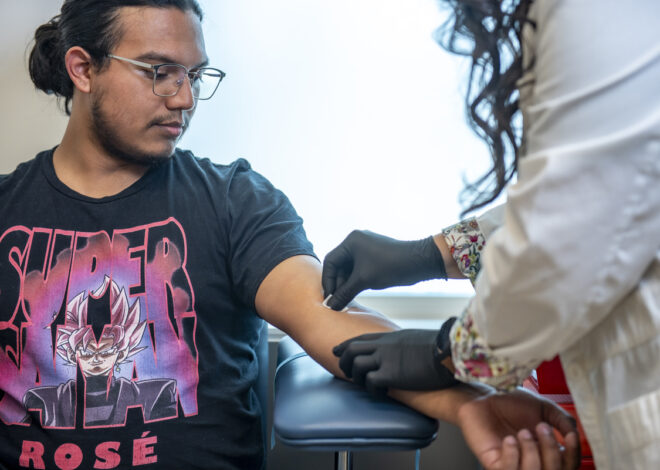
How to Make Healthy Hair Color at Home 2023
Healthy Hair Color at Home
In the ever-evolving world of beauty and self-care, the quest for healthier and more natural alternatives is on the rise. As we step into 2023, the desire for vibrant, lustrous locks takes a greener turn with the trend of making healthy hair color at home. Embracing the idea that beauty should not come at the cost of one’s well-being or the environment, creating your own hair color concoctions using natural ingredients is a fascinating journey. Not only does it offer you a personalized approach to hair care, but it also reduces exposure to harmful chemicals commonly found in commercial hair dyes.
In this guide, we embark on an exploration of the exciting realm of DIY healthy hair coloring, unveiling the ingredients, techniques, and insights you need to achieve gorgeous, toxin-free tresses right from the comfort of your home in 2023.
Natural Hair Color Ingredients
When it comes to making healthy hair color at home in 2023, understanding the ingredients that can provide beautiful hues while promoting hair health is crucial. By harnessing the power of nature’s palette, you can achieve stunning results without the harmful chemicals often found in commercial hair dyes. Let’s delve into the world of natural hair color ingredients, exploring the options available to help you create your personalized and toxin-free hair color solutions.
1. Henna: Henna, derived from the leaves of the Lawsonia inermis plant, has been used for centuries to impart vibrant red and auburn shades to hair. It not only adds color but also conditions and strengthens hair, leaving it shiny and lustrous.
2. Indigo: Indigo, obtained from the Indigofera tinctoria plant, complements henna beautifully to create shades ranging from deep blue-black to rich brown. When mixed with henna, it can help you achieve a spectrum of natural-looking colors.
3. Cassia: Cassia, also known as neutral henna, comes from the leaves of the Cassia obovata plant. It imparts a golden or coppery hue to light-colored hair and offers conditioning benefits without significant color change.
4. Beetroot: For a natural red tint, beetroot is an excellent choice. It’s rich in antioxidants and vitamins that not only color your hair but also nourish it.
5. Chamomile: Chamomile flowers can lighten hair and add subtle golden highlights. A chamomile infusion can also soothe the scalp and enhance hair shine.
6. Coffee and Black Tea: Both coffee and black tea can darken hair and add depth to brown shades. Coffee is particularly effective in enhancing brown hues, while black tea can enrich black and dark brown hair.
7. Lemon: Lemon juice, when exposed to sunlight, can create natural highlights in light hair. It’s an ideal choice for achieving sun-kissed streaks.
8. Walnut Shell Powder: Ground walnut shells can provide a dark brown tint and are especially useful for covering gray hair.
9. Sage: Sage leaves, when brewed into a strong tea, can help darken hair and cover gray strands.
10. Amla (Indian Gooseberry): Amla is packed with vitamin C and can be used to enhance the natural color of your hair while promoting hair health.
11. Rosemary: Rosemary can stimulate hair growth and add shine to dark hair. It’s a valuable herb for those looking to maintain their natural color.
12. Rhubarb: Rhubarb root can produce auburn to reddish-brown hues and is known for its conditioning properties.
As you explore the world of natural hair color ingredients, keep in mind that the results may vary based on your hair’s natural color and texture. Experimentation and customization are key to achieving the desired shade.
Preparing Your Hair for DIY Coloring
Before embarking on your DIY hair coloring adventure in 2023, it’s essential to ensure your hair is in the best possible condition to achieve vibrant and long-lasting results. Here’s how to prepare your hair for the coloring process:
- Clarify Your Hair: Start by clarifying your hair to remove any product buildup, oils, or impurities. A clarifying shampoo or a mixture of baking soda and water can help strip away residues, ensuring that your hair is a clean canvas for the color.
- Deep Conditioning: Treat your hair to a deep conditioning treatment a few days before coloring. This helps to moisturize and strengthen your strands, making them more receptive to the color and less prone to damage.
- Trim and Split Ends: If you have split ends or damaged hair, consider getting a trim. Healthy ends can hold color better and give your hair a more polished look.
- Avoid Washing Right Before: Don’t wash your hair immediately before coloring. Natural oils on your scalp act as a protective barrier, and coloring on slightly dirty hair can help the color adhere better.
- Perform a Strand Test: Before applying the color to your entire head, do a strand test. This will help you determine how the color will turn out and whether you need to adjust the formula or application time.
Taking these steps to prepare your hair ensures that you’ll achieve the best results when you embark on your DIY hair coloring journey in 2023. Healthy, well-prepped hair not only looks better but also holds color more effectively, giving you the stunning and vibrant results you desire.
Application Techniques and Tips
Mastering the art of applying homemade hair color is key to achieving the vibrant and healthy results you desire. Here are some essential techniques and tips to ensure a successful DIY hair coloring experience in 2023:
- Section Your Hair: Divide your hair into manageable sections before applying the color. This ensures even coverage and prevents patches or missed spots.
- Use Protective Gear: Wear disposable gloves to shield your hands from staining. Consider draping an old towel over your shoulders to protect your clothes.
- Start with Clean Hair: Begin with freshly washed and completely dry hair. Avoid using any conditioner or styling products before coloring.
- Mix Thoroughly: Follow the instructions for mixing your chosen natural hair color. Ensure that the mixture is smooth and free of lumps.
- Apply from Roots to Ends: Start applying the color at the roots and work your way down to the ends. Use a brush or applicator to distribute the color evenly.
- Time It Right: Follow the recommended processing time specified in your hair color recipe. Set a timer to avoid over-processing, which can lead to undesirable results.
- Wrap and Wait: Once applied, wrap your hair in a shower cap or plastic wrap to trap heat, aiding in color absorption. This also prevents dripping.
- Rinse with Care: When it’s time to rinse, use lukewarm water to gently remove the color. Avoid hot water, which can strip the color.
- Post-Color Care: After rinsing, use a mild sulfate-free shampoo and conditioner specifically designed for colored hair. These products help maintain your color’s longevity.
- Regular Maintenance: To extend the life of your DIY hair color, reduce the frequency of shampooing, and use color-protecting products. Consider touch-ups as needed to maintain your desired shade.
By mastering these application techniques and following these tips, you’ll be well on your way to achieving beautiful, healthy, and naturally colored hair right from the comfort of your home in 2023.
Conclusion:
In a world where self-care and environmental consciousness increasingly intertwine, the choice to embrace the beauty of homemade hair color is a reflection of your commitment to both personal well-being and global sustainability. So, whether you’re opting for the fiery richness of henna, the earthy depths of indigo, or the subtle highlights of chamomile, know that your journey to healthier, more vibrant hair begins right at home. As we step into 2023, may your locks shine with natural radiance, and may your commitment to green beauty inspire others to embark on this enchanting voyage towards healthier and more beautiful hair.


